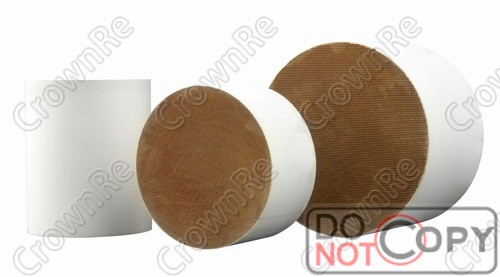
NEWS

Diesel engines can produce NOx and particulate pollutants; future emission regulations for diesel engines are requiring the development of emission control systems to reduce the amount of pollutants emitted on every vehicle.
Larger engines, in trucks and buses, are almost exclusively diesel powered. In order to meet required legislation across a wide range of engine types and sizes, dedicated emission control systems are being developed. Compliance to the upcoming regulations for both mobile and stationary diesel engines is being met by use of numerous strategies, with catalyst technologies playing a major role. Diesel Oxidation Catalysts (DOC), Catalysed particulate filters (CDPF), lean NOx traps (LNT) and Selective Catalytic Reduction (SCR) catalysts are all being developed to meet legislative targets. In Diesel cars, there is a growing need for NOx control.
The CROWNREcatTM range of zirconium oxides have been developed by CROWNRE Chemicals; our technology allows us to customise powder properties to suit a wide range of catalytic applications. For use as catalyst supports in DOC and especially CDPF, systems that have excellent sulphur tolerance and thermal stability are available. The particle size distribution of the powders allows them to be washcoated with PGM (Pt or Pt/Pd systems).
CROWNRE produces tailored materials for Diesel applications; please contact us to discuss your requirements.
Three way catalysis
All gasoline powered cars require catalytic after treatment; these catalysts are known as Three Way Catalysts (TWC). A three-way catalytic converter has three simultaneous tasks:
1. Reduction of nitrogen oxides to nitrogen and oxygen:
2NOx → xO2 + N2
2. Oxidation of carbon monoxide to carbon dioxide:
2CO + O2 → 2CO2
3.Oxidation of unburnt hydrocarbons (HC) to carbon dioxide and water:
2CxHy + (2x+y/2)O2 → 2xCO2 + yH2O
These three reactions occur most efficiently when the catalytic converter receives exhaust from an engine running slightly above the stoichiometric point. This is between 14.6 and 14.8 parts air to 1 part fuel, by weight, for gasoline (the ratio for LPG, natural gas and ethanol fuels is slightly different, requiring modified fuel system settings when using those fuels).
When there is more oxygen than required, then the system is said to be running lean, and the system is in oxidizing condition. In that case, the converter's two oxidizing reactions (oxidation of CO and hydrocarbons) are favoured, at the expense of the reducing reaction.
When there is excessive fuel, then the engine is running rich. The reduction of NOx is favoured, at the expense of CO and HC oxidation. If an engine could be operated with infinitesimally small oscillations about the stoichiometric point for the fuel used, it is theoretically possible to reach 100% conversion efficiencies.
CROWNRE produces tailored materials for TWC applications; please contact us to discuss your requirements.